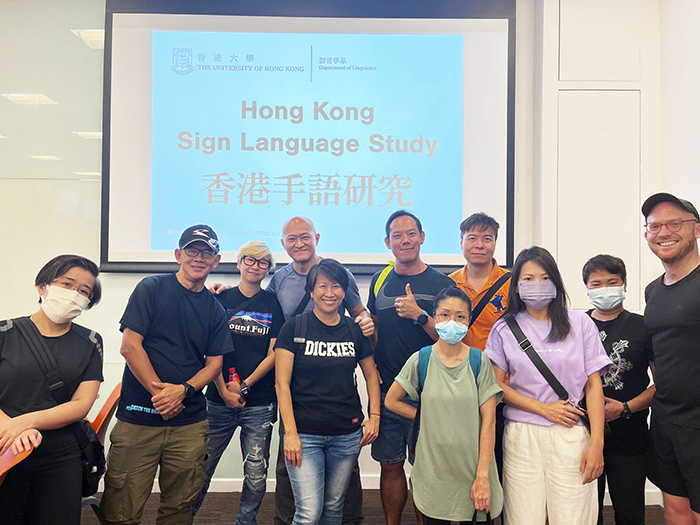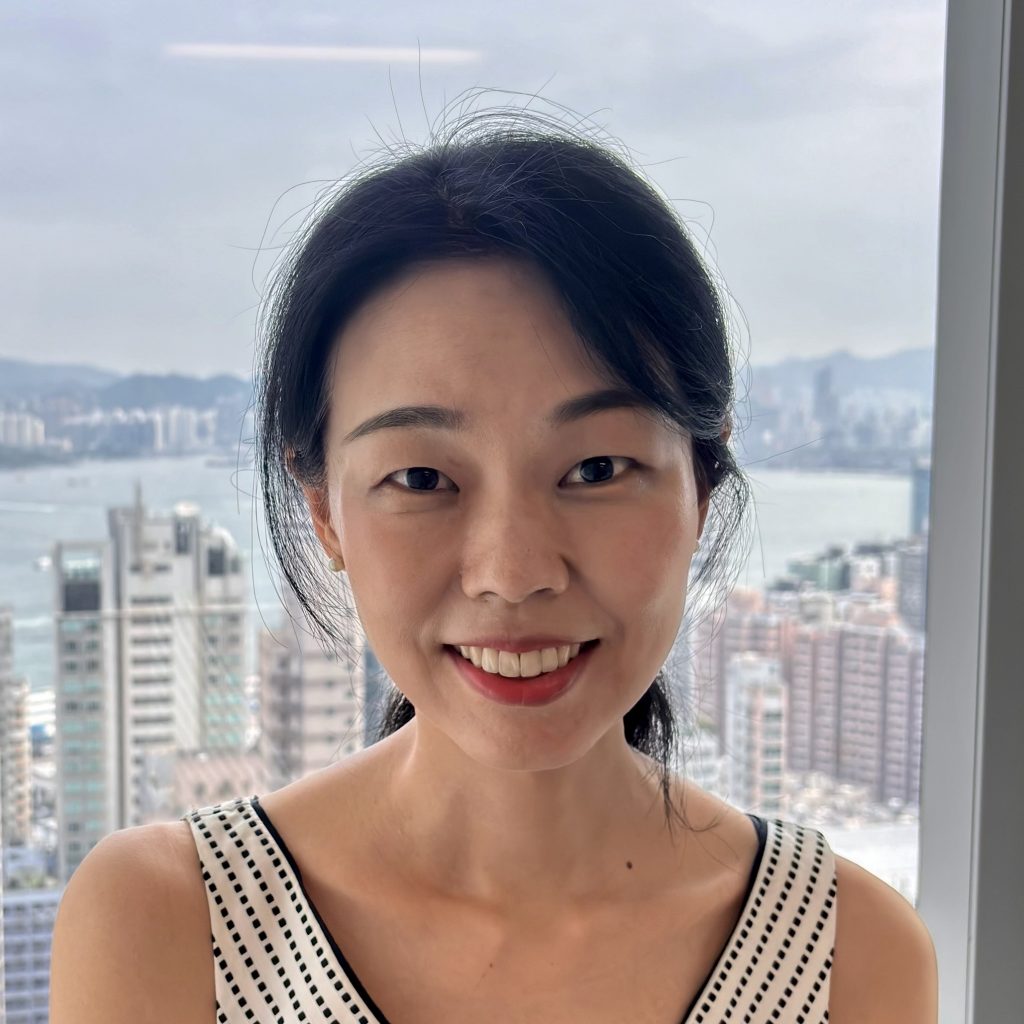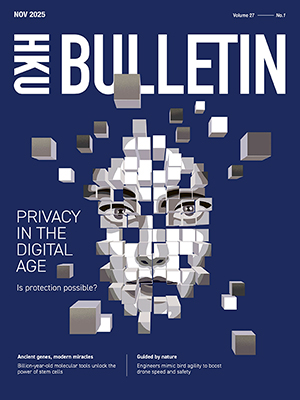November 2024 | Volume 26 No. 1
A Voice for the Deaf
Listen to this article:
Parents of Deaf children often make a difficult decision about their child’s education – the stigma attached to using sign language, and the paucity of schools for the Deaf – meaning they usually place their children in normal schools alongside hearing children. Unfortunately, that means Deaf students must rely on lip reading to understand what is going on – a huge challenge given Cantonese is a tonal language. As a result, their education and cognitive development are both hindered.
Professor Youngah Do, Associate Professor of Linguistics, became aware of the problem around four years ago, when one of her then-PhD students, Arthur Thompson, decided to learn HKSL for interest’s sake. They are both phonologists, meaning they investigate the system of smallest units that make up language, such as the sounds ‘c’, ‘a’ and ‘t’ for cat. Professor Do saw the possibility of doing this for HKSL, which has no official status or support.
“In sign language, words are produced through the ways you shape, place and move your hands, but sign languages are not universal and they can vary a lot. In Hong Kong, where there is no structured curriculum or government policies on sign language education, Deaf people may use different variants of HKSL, which could hinder communication among each other,” she said.
“We realised that the most fundamental data about Hong Kong Sign Language was lacking, such as a database of the basic parameters of signs, unlike the British or American versions. So we decided to collect data as a very first step, not just for our research but for future generations of Deaf people.”
Data collection
Professor Do and her team and a group of interested undergraduate students learnt HKSL over a year so they could undertake the research. A curriculum was developed with the Deaf community and four of the students were also recruited for a case study in which they were recorded twice a week over 12 weeks learning to sign. “We understand a lot about how spoken language is acquired over time, but there is very little material for hearing people learning to sign. We want to see what it looks like in real time,” Dr Thompson said.
The team also documented ‘citation signs’ – in effect, created a dictionary – on video with different members of the Deaf community, including 38 seniors. They were filmed signing a word in HKSL, while the equivalent in Cantonese was said aloud. Pairs of people were also recorded signing with each other to have more naturalistic data of the language, and Deaf signers were asked to explain why things were signed in certain ways to help understand the etymology.
Many of the elderly participants did not know how to use a computer, so training was also provided to allow them to join the online components of the research.
The collected data has been used to develop a model that can assist in training HKSL translators and interpreters. It is also being used to build a natural language processing model – like a Google Translate for sign language. “Ultimately, if it’s very successful, a Deaf person could sign in front of their phone and that would be translated to hearers, or vice versa,” Professor Do said.

Members of the Deaf community were engaged in the building of the Hong Kong Sign Language database.
Improving communication
The impact of the work goes beyond research. Students and staff participating in the research have been motivated to use their new signing skills to help the Deaf community.
Dr Thompson co-produced a documentary about Deaf parents and their children, called Bridge of Signs, that received funding support from the Hong Kong Arts Development Council. Students served as docents at workshops hosted by Deaf artists, acting as interpreters to communicate between the artists and hearing members of the audience.
Students also supported first-aid services at two football matches organised for the Deaf by the Hong Kong, China Sports Association of the Deaf in early 2024. Aaron Chik Wing-cheung, who is Research Assistant of the Department of Linguistics’ Language Development Lab, was a driving force behind that. He has been a volunteer with Hong Kong St. John Ambulance for five years and is aware of the communication problems Deaf people encounter when they have a medical emergency.
“Being able to communicate with players at these events was incredibly rewarding. I could focus entirely on treating their injuries without the added stress of language barriers,” he said.
Professor Do said their ultimate aim was to improve communication for the Deaf community. “The Deaf people we work with are excited that there are people interested in their language, because they’ve always been told not to use it,” she said. “We are still at an early stage of our research, but I hope that our work lets people know that we should take this situation more seriously.”
The Deaf people we work with are excited that there are people interested in their language, because they’ve always been told not to use it.

Professor Youngah Do

